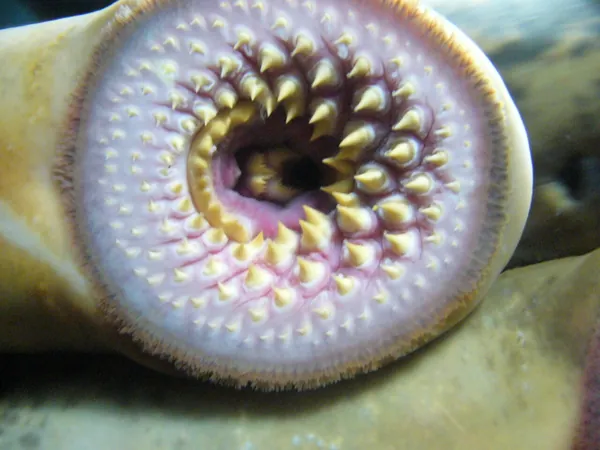
Shocking Climate Changes in the Cretaceous Period Cause Lamprey Divergence – What This Means for Today’s Aquatic Life!
2025-01-08
Author: Liam
Groundbreaking Research Unveiled
A groundbreaking study has unveiled fascinating insights into how one of the hottest eras in Earth's history—the Cretaceous period—drove lampreys apart at a genetic level. This research, now published in the highly regarded journal *Proceedings of the Royal Society B: Biological Sciences*, sheds light on how modern aquatic species might respond to the current climate crisis.
The Significance of Lampreys
Lily Hughes, the corresponding author and a research assistant professor at North Carolina State University, describes lampreys as 'creepy yet special,' often dismissed as mere 'tubes with a freaky circle of teeth.' Hughes emphasizes their significance: “They are an ancient and remarkable species, crucial for filtering nutrients and maintaining water quality in stream beds. However, their evolutionary relationships remain poorly understood.”
The Current Status of Lampreys
Currently, there are only 48 recognized lamprey species, classified into three families—one located in the Northern Hemisphere and two in the Southern Hemisphere. Interestingly, no lamprey species inhabit the tropics near the equator.
Divergence Timeline
The research team, including co-first author Devin Bloom from Western Michigan University, aimed to uncover when these distinct groups diverged from their common ancestor. Through a detailed analysis combining DNA samples from extant lampreys and fossilized records, the scientists constructed phylogenomic trees. They discovered a dramatic separation between Northern and Southern Hemisphere lampreys approximately 93 million years ago, right in the heart of the Cretaceous period.
The Impact of Climate on Lampreys
During this time, global average temperatures soared to about 82°F (28.1°C), with tropical temperatures reaching a blistering 93.5°F (34.2°C). “Lamprey larvae prefer cooler environments, which is why they burrow into stream beds. The extreme heat of the tropics likely pushed them to their limits, making survival nearly impossible,” Hughes observes.
Theories of Evolutionary Split
The study proposes several theories for this evolutionary split. One possibility is that tropical lampreys may have faced extinction due to the unbearable heat, severing their common genetic link. Alternatively, those that survived may have migrated away from the equator to more temperate regions. Although the exact distribution of lampreys during the Cretaceous remains uncertain, the researchers are confident that this was the crucial period for the species' divergence.
Challenging Established Theories
This research also challenges established theories regarding lamprey distribution. Kyle Piller from Southeastern Louisiana University and his colleagues originally thought the ancient supercontinent Pangea might have caused physical separation. However, the new findings demonstrate that the divergence occurred long after Pangea's breakup, suggesting evolution is more complex than previously thought.
Implications for Modern Aquatic Life
As climate change increasingly reshapes our environment, understanding the past responses of species like lampreys can offer invaluable insights into how today's aquatic life may adapt—or fail to adapt—to rapidly shifting conditions. This study could be the key to safeguarding our planet’s delicate ecosystems in the face of ongoing climate threats. Stay tuned for more shocking revelations on how ancient climate events shape our biological heritage!









 Brasil (PT)
Brasil (PT)
 Canada (EN)
Canada (EN)
 Chile (ES)
Chile (ES)
 Česko (CS)
Česko (CS)
 대한민국 (KO)
대한민국 (KO)
 España (ES)
España (ES)
 France (FR)
France (FR)
 Hong Kong (EN)
Hong Kong (EN)
 Italia (IT)
Italia (IT)
 日本 (JA)
日本 (JA)
 Magyarország (HU)
Magyarország (HU)
 Norge (NO)
Norge (NO)
 Polska (PL)
Polska (PL)
 Schweiz (DE)
Schweiz (DE)
 Singapore (EN)
Singapore (EN)
 Sverige (SV)
Sverige (SV)
 Suomi (FI)
Suomi (FI)
 Türkiye (TR)
Türkiye (TR)
 الإمارات العربية المتحدة (AR)
الإمارات العربية المتحدة (AR)